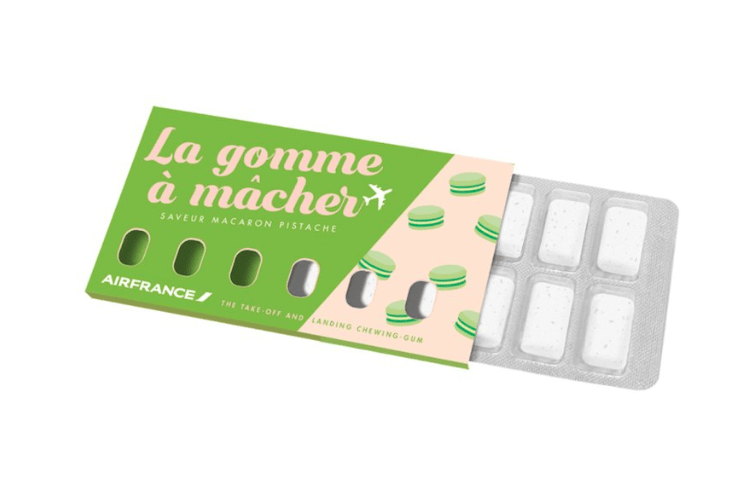PaxEx FAQ: Why Do Ears Pop in Flight?
Share

APEX Insight: Air France is offering passengers chewing gum to blow ear pain away. But what causes the discomfort in the first place? In this installment of PaxEx FAQs, we explore what causes ears to pop in flight and offer solutions to manage ear pressure.
Pistachio Macaroon or Crème Brule are the two flavors of chewing gum offered by Air France in an effort to relieve the discomfort passengers feel as their ears adjust to the altitude change that occurs during takeoff and landing. The need to pop your ears while in flight occurs as a result of the pressure on the outside of the ears not equaling the pressure on the inside of the ears. As the pressure in the Eustachian tube, which connects your throat to your middle ear, changes quickly during the ascent or descent, the need to equalize creates the sensation of a pop. During this pressure inequality hearing can be affected as the ear drums are unable to vibrate and conduct sound smoothly.
Chewing gum or sucking on candy stimulates frequent swallowing and helps relieve pressure. Simply swallowing repeatedly will also alleviate pressure. The constant cycle of air activates the muscles that control the Eustachian tubes, allowing the pressure both in and outside of the ears to remain equal.
The Valsalva maneuver relieves ear pressure and induces a pop.
Earplugs restrict the flow of air to the eardrum and allow the ears to adjust to changes in pressure gradually. Alpine Flyfit earplugs are soft, reusable and built for comfort while disposable option EarPlanes are made from silicone and are available in kid’s sizes. For earplugs to function properly, they must fit in the ear canal, with no air escaping. Earplugs have the added benefits of blocking out sounds of other passengers and engine noises.
The Valsalva maneuver is another technique to relieve ear pressure and induce a pop. This method, which should not be used by passengers with a cold or allergies as it could damage the Eustachian tubes, involves closing the mouth and pinching the nose while gradually forcing air out until pressure is released. Another option is to force a yawn, which opens the Eustachian tube allowing air to flow in and out of the ear. Nasal decongestants in tablet or spray form can also be used before and during flights.
On a Turkish Airlines flight, Dr Oz shared his tip to alleviate pressure build up and ear pain: press the tongue on the roof of their mouth. This technique also opens up the airways and allows pressure to flow evenly.


